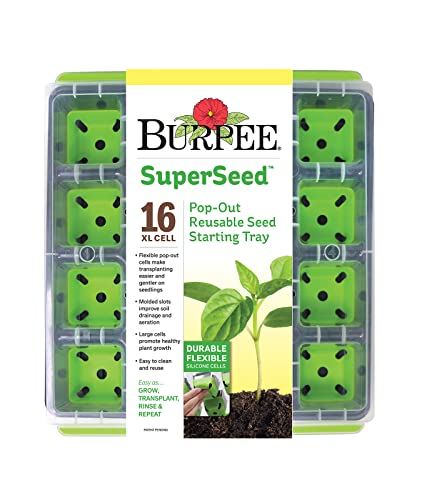Marigolds are flowers with bright colors when they bloom. They are usually popular in garden settings. Do marigolds need full sun? We researched this, so you don't have to. This is what our research found out.
Marigolds require full sun to bloom or produce multiple flowers. Planting them in full sun promotes lush, dense growth of leaves and increased production.
Marigolds are very easy to grow and bring bright colors to your garden. This article will provide a comprehensive guide to marigolds for beginners. Continue reading to find out more.
Do Marigolds Need Full Sun?
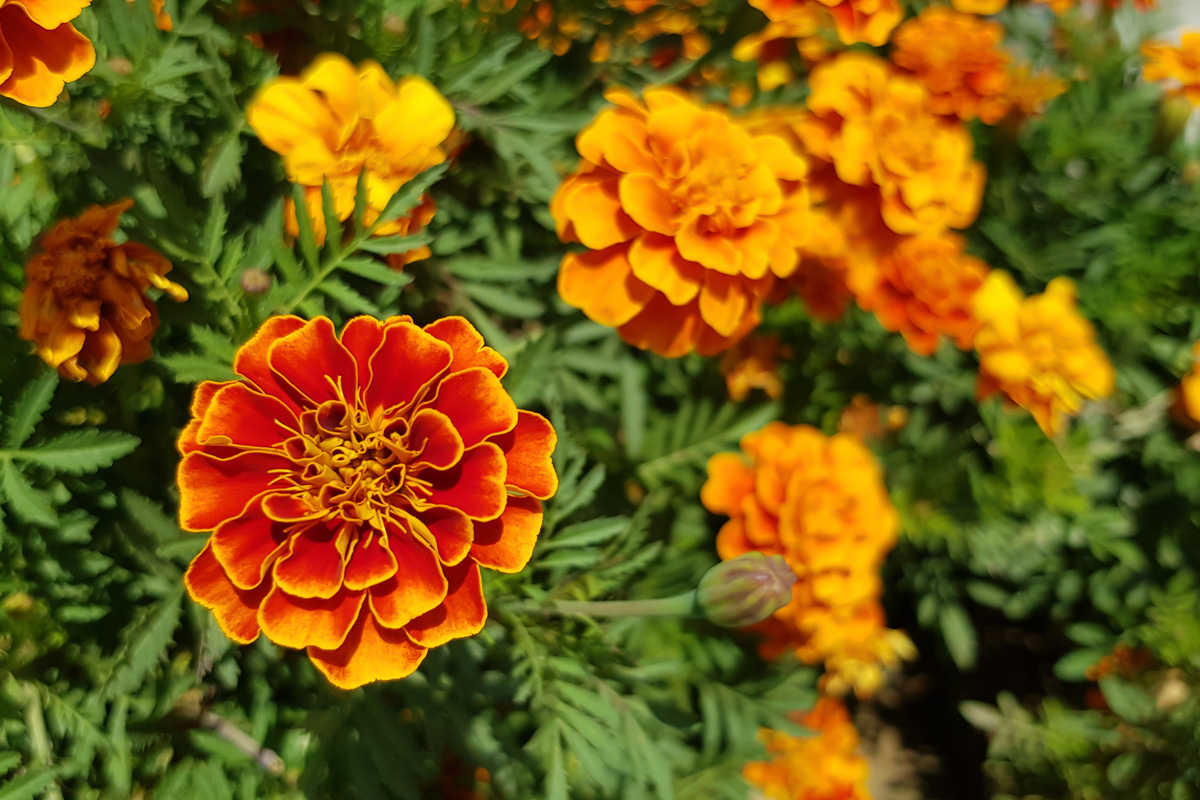
Marigolds flourish and bloom in direct sunlight and don't thrive much in partial shade. They need exposure to full sunlight for at least 6 to 8 hours, which is why it is ideal for growing during the summer.
Marigolds grow well in various soil and climatic environments, making them incredibly simple to plant. They require little to no care as they grow and are also low-maintenance.
Marigolds, also known as Tagetes, are flowers with bright colors ranging from yellow to orange and red. They also have different sizes and shapes. Some are daisy-like, and some are pompom-shaped or ruffled.
Are Marigolds Annuals or Perennials?
Marigolds can be both annual and perennial. Most marigolds are annuals, meaning they only live for one growing season or year, although some are considered perennials because they are self-seeding.
Self-seeding plants can behave like perennials. They typically fall to the ground and replant themselves at some point during their life cycle. Herbaceous plants are almost all annuals. Marigolds are herbaceous plants with flexible stems with little to no persistent woody parts.
Are Marigolds Suitable Indoors?
Marigolds can be grown indoors so that you can admire their lovely blooms. However, because of this plant's intense need for sunlight, it is only possible to grow it indoors, close to a window, or in a location with sufficient sunlight.
Types of Marigolds
![Marigolds close-up on a flower bed in the garden in the light of the sun., Do Marigolds Need Full Sun? [Comprehensive Guide For Beginners]](https://gardentabs.com/wp-content/uploads/2022/12/18.-Do-Marigolds-Need-Full-Sun-Comprehensive-Guide-For-Beginners.jpg)
There are more than 50 different types of marigolds present. Two of the main types that are commonly found and grow in gardens are French marigolds and African marigolds.
French marigolds

The most common type is the French marigold, also known as Tagetes patula. It has fern-like leaves and flowers ranging from yellow to orange to red. French marigolds typically grow to a height of 10 to 12 inches.
African marigolds

Another common variety is the African marigold or Tagetes erecta. They are taller than the French marigold and have larger leaves. It has large, ruffled, and almost pompom-shaped flowers, with colors ranging from yellow to orange. Typically grows reaching 12 to 20 inches tall
How to Plant Marigolds
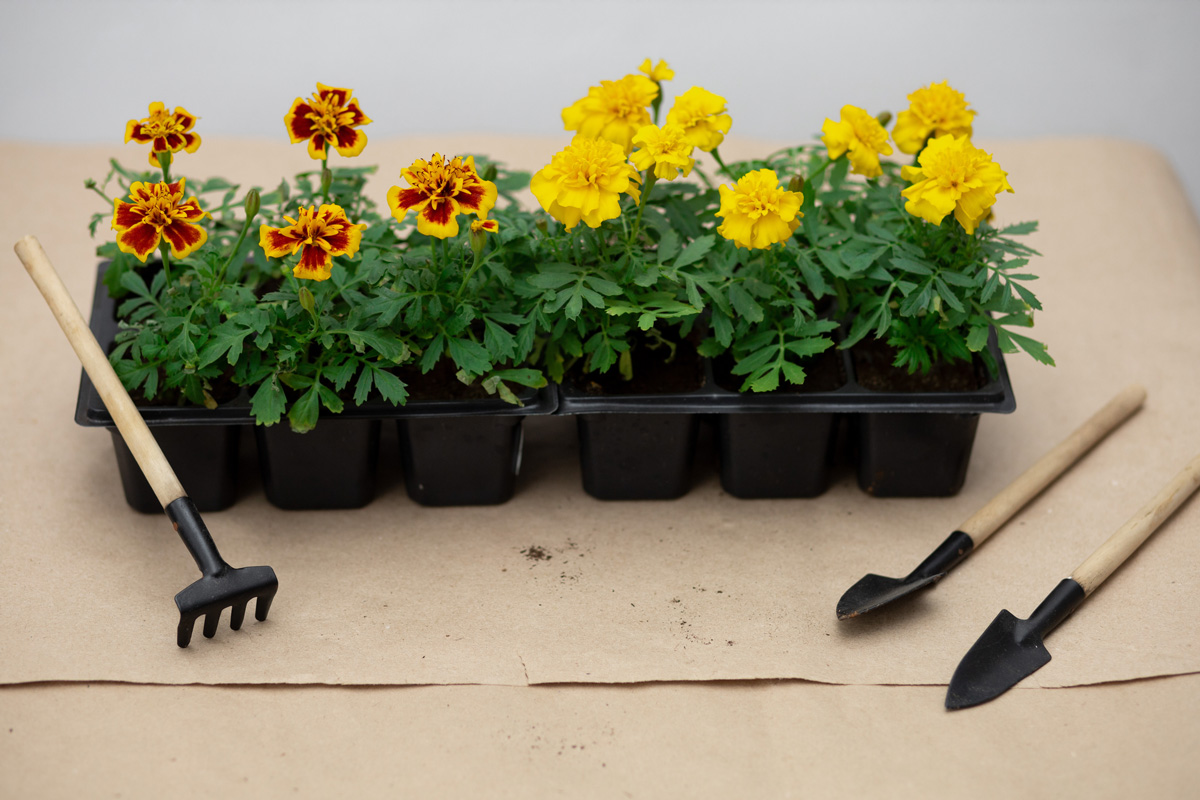
When planting marigolds, seeds should be spaced least 1 inch apart. Marigold seeds usually take 4 or 5 days to germinate.
Click here to see this pack of marigold seeds on Amazon.
When growing marigolds in seed trays, ensure the soil is warm and moist until they sprout. After they've sprouted, you can let the soil dry a little in between watering.
Click here to see this seedling tray on Amazon.
Marigolds should be separated by 10 to 12 inches as soon as they have grown and require at least 10 inches of width and depth if you plant them in a planter or pot. This will guarantee that every plant in your garden has enough space and sunlight to thrive.
Click here to see this planter on Amazon.
When is the Best Time to Plant Marigolds?
Spring is the best time to plant marigolds. Marigolds can germinate quickly and do not need sunlight until after the seeds germinate and sprout.
They will bloom in abundant sunlight for about eight weeks after being planted. It takes 7 to 14 days for the plant to sprout after planting the seeds.
Where to Plant Marigolds
Rich, loamy, loose, and well-draining soil is ideal for marigolds. Of course, not everyone has such lovely ground. Lucky for us, marigolds thrive in clay, sandy, or otherwise deficient soil.
However, if you amend your soil with plenty of well-rotted compost, you'll have better ground for your marigolds while topping it with mulch. For planting in containers, an all-purpose potting mix is ideal.
Click here to see this potting mix on Amazon.
Taking Care of your Marigolds
Marigolds require little to no effort and don't need much care, making them convenient to plant and easy to tend to and nurture.
Deadheading
Deadheading flowers is one of the most fulfilling garden maintenance tasks for many gardeners. Consider deadheading to promote and encourage new growth and aid the plant in producing fresh flowers.
However, you don't need to routinely deadhead marigolds as they are self-seeding. Once their flower dies and falls to the ground, the seeds will bloom in the next blooming period.
Fertilizing
Marigolds, as low-maintenance plants, don't need a lot of fertilizer. Planting them in soil with a good mixture of compost will provide them with long-lasting nutrition.
Transplanting
You can transplant your marigolds in plant pots. Drainage should be your top priority when selecting a plant container. Make sure that the pot or container you choose has at least one drainage hole in the bottom. It is critical for the health of your plants that your planter pot has good drainage.
Benefits of Planting Marigolds
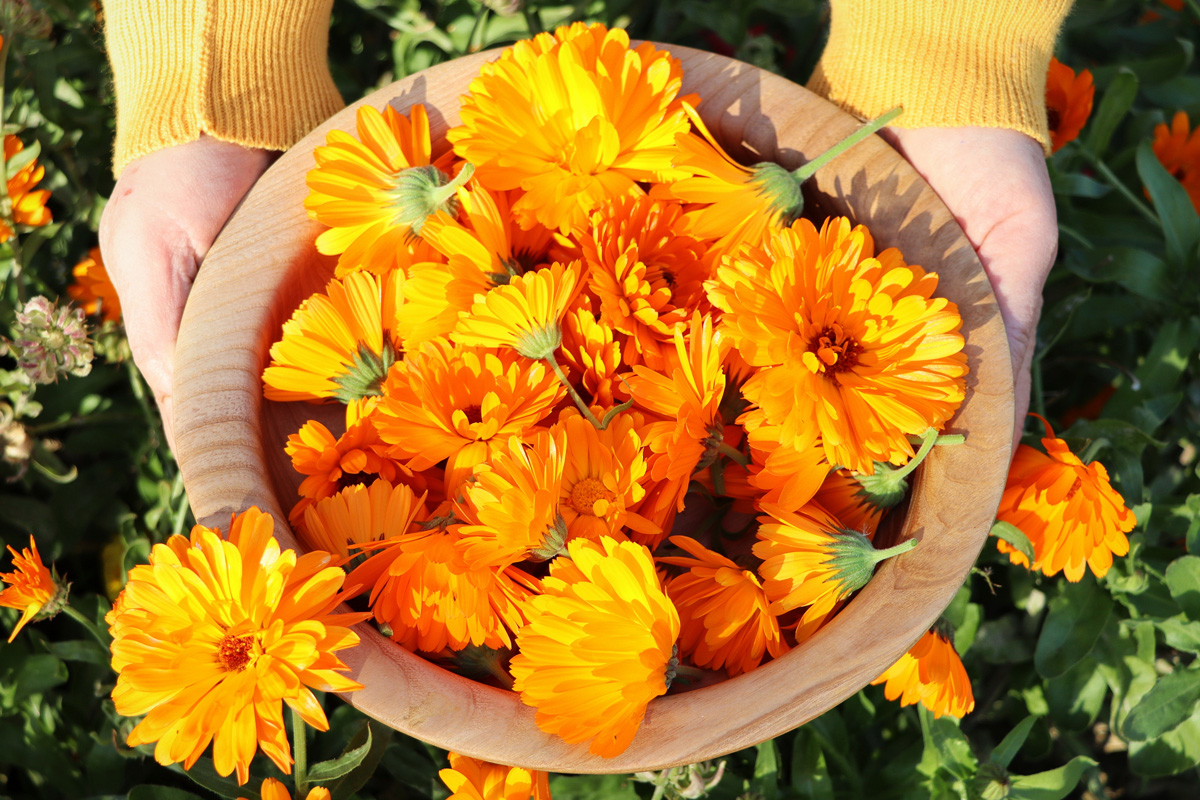
Sowing marigold seeds is simple and easy, and they sprout quickly. Marigolds make excellent decorative plants and add bright colors to your garden. They can also be planted in ground, pots, and raised beds.
Marigolds offer a ton of benefits to your garden. Marigolds are suitable for repelling insects and keeping pests away while attracting pollinators such as bees and butterflies.
Common Issues for Marigolds
Although they repel insects such as mosquitoes, nematodes like cabbage worms, tomato hornworms, and other pests, marigolds can develop a few disease and pest problems.
Aphids
Aphids are one of the common garden pests that harm marigolds. The tiny pests damage the plant by piercing the leaves and sucking out the sweet nectar. They are frequently spotted on the underside or at the joints of leaves and stems.
Powdery mildew
Powdery mildew is a common issue found in marigolds. It is a fungal disease that causes gray or white mold, commonly seen and grows in the leaves of marigolds. Infected leaves may abnormally develop or wither.
Wilted leaves
The most frequent cause of leaf wilting is parched soil. Although marigolds can endure drought, it does not mean they will survive for long. Have a regular watering schedule, especially during scorching hot summer days.
Overwatering
Marigolds should not be exposed to excessive moisture, even though they can tolerate overwatering and moist soil. The roots of your marigold will rot as a result of this.
Flowers not blooming
When marigolds don't bloom, it usually means they aren't getting enough sunlight. Marigolds enjoy complete sunlight exposure. Ensure that you're placing your plant where it can get ample sun.
Are Marigolds Edible?
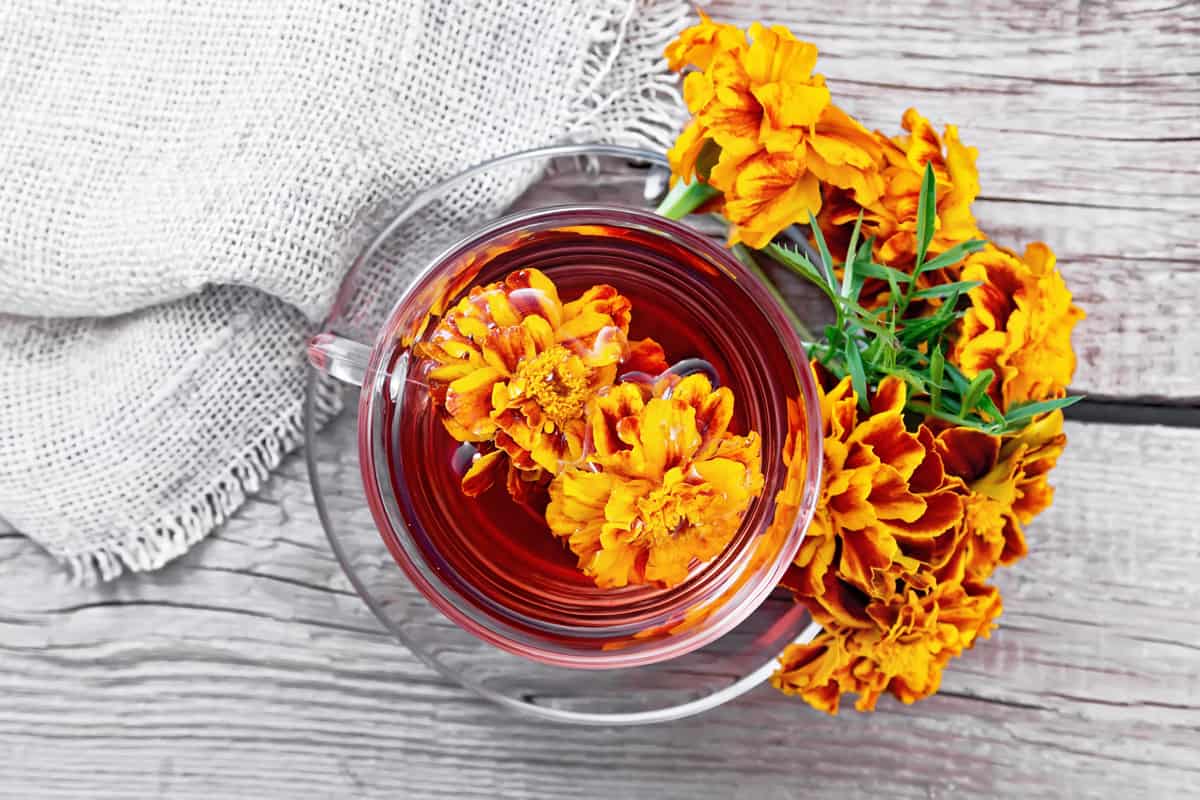
Marigolds are both used in culinary dishes and medical procedures. Although marigolds are toxic and may cause a skin rash when touched, some varieties can be edible.
Regarding medicinal properties, Tagetes treats digestive tract issues like poor appetite, gas, stomach pain, colic, intestinal worms, and dysentery.
In Closing
There are numerous reasons why marigolds are a favorite flower for home gardeners. Even in the hottest climates, these easygoing, low-maintenance plants will bloom all season. During the growing season, marigold seeds and transplants are widely accessible and make an excellent addition to any porch or garden area that receives full sun.
We hope this article has provided you with sufficient information regarding marigolds. Want to read more? Check out these related posts below!
Which Marigolds Are Not Edible/Toxic? [Comprehensive Guide]
Are Marigolds Good For Your Vegetable Garden?


